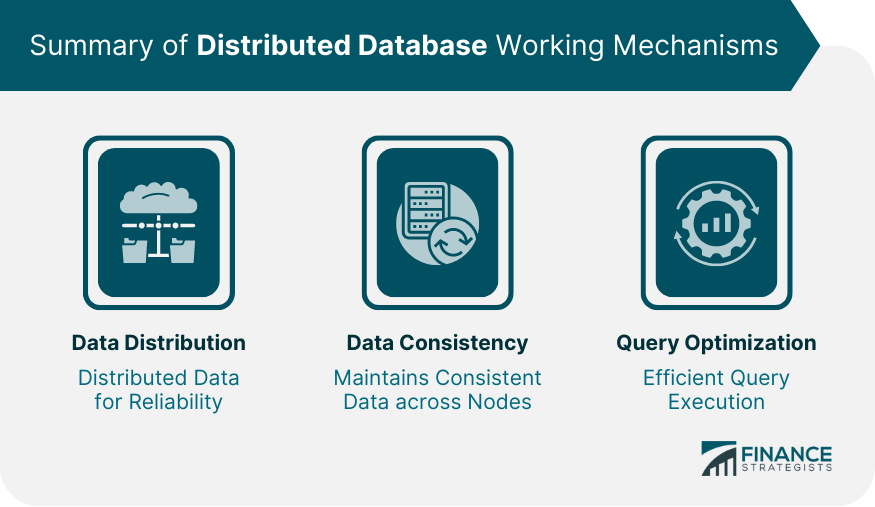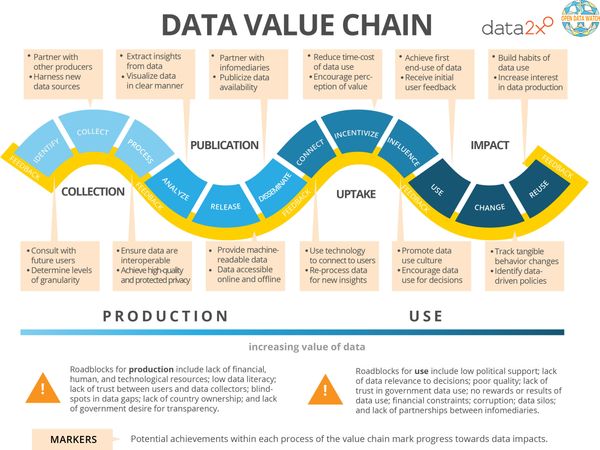Overview
What is SQL Server Database Optimization?
SQL Server Database Optimization is the process of improving the performance and efficiency of a SQL Server database. It involves various techniques and strategies to enhance the speed and responsiveness of database operations. One of the key areas of focus in SQL Server Database Optimization is handling high-concurrency workloads. High-concurrency workloads refer to situations where multiple users or applications are accessing the database simultaneously, leading to increased contention and potential performance issues. To address this challenge, SQL Server Database Optimization employs techniques such as index optimization, query tuning, and resource allocation to ensure optimal performance and scalability. By optimizing the SQL Server database, organizations can achieve better efficiency, faster query execution, and improved overall system performance.
Importance of Database Optimization
Database optimization plays a crucial role in enhancing the performance and efficiency of SQL Server databases. It involves the process of fine-tuning the database configuration, schema design, and query optimization to ensure optimal resource utilization and faster query execution. The importance of database optimization cannot be overstated, especially in today’s data-driven world where organizations rely heavily on their databases for critical business operations. By implementing effective optimization techniques, expert DBAs can significantly improve the overall performance of the database, resulting in faster response times, reduced latency, and improved scalability.
Benefits of Optimizing SQL Server Databases
Optimizing SQL Server databases offers several benefits that can significantly improve performance and efficiency. By fine-tuning the database configuration, indexing, and query optimization, organizations can experience faster query execution times, reduced resource consumption, and improved overall system responsiveness. Additionally, optimized databases can handle larger data volumes and accommodate increasing user loads without sacrificing performance. The result is a more reliable and scalable system that can meet the demands of modern data-driven applications. By investing in SQL Server database optimization, organizations can maximize their return on investment and ensure a smooth and efficient operation.
Analyzing Database Performance

Identifying Performance Bottlenecks
Identifying performance bottlenecks is a crucial step in optimizing the efficiency of an SQL Server database. By identifying and resolving these bottlenecks, organizations can ensure that their database performs at its best, resulting in improved overall performance. One of the key factors to consider in this process is the management of enterprise data. Efficiently managing and organizing enterprise data can significantly impact the performance of an SQL Server database. By implementing strategies such as indexing, partitioning, and query optimization, organizations can optimize their database to handle large volumes of enterprise data more effectively. This not only boosts performance but also enhances the overall efficiency of the database, enabling organizations to make better data-driven decisions. With the right approach to identifying and addressing performance bottlenecks, organizations can unlock the full potential of their SQL Server database.
Monitoring Query Execution
Monitoring query execution is a crucial aspect of SQL Server database optimization. By closely monitoring the execution of queries, database administrators can identify and address performance bottlenecks, improve query response times, and enhance overall database efficiency. This process involves tracking query execution plans, analyzing query statistics, and identifying areas for optimization. With the right monitoring tools and techniques, administrators can proactively identify and resolve issues, ensuring that the database operates at peak performance. Effective monitoring of query execution is essential for maintaining a high-performing SQL Server database.
Analyzing Index Usage
Analyzing Index Usage
Database manipulation is a crucial aspect of SQL Server database optimization. By understanding how indexes are used within the database, you can identify areas for improvement and boost performance. Analyzing index usage involves examining the effectiveness of indexes in supporting query execution and identifying any unused or underused indexes. This process helps to optimize query performance, reduce query execution time, and improve overall database efficiency. By analyzing index usage, you can make informed decisions about index creation, modification, or removal, ultimately leading to a more efficient and responsive database system.
Optimizing Query Performance

Query Optimization Techniques
Query optimization techniques are crucial for maximizing the performance and efficiency of SQL Server databases. By fine-tuning the way queries are executed, developers and database administrators can significantly improve the response time and overall speed of their applications. Some of the key techniques for optimizing queries include index optimization, query rewriting, and statistics management. Index optimization involves creating and maintaining appropriate indexes to speed up query execution. Query rewriting involves modifying the structure or logic of a query to make it more efficient. Statistics management involves keeping track of data distribution and updating statistics to help the query optimizer make better decisions. By applying these techniques, organizations can ensure that their SQL Server databases perform at their best, delivering fast and efficient results to end users.
Using Indexes Effectively
Using indexes effectively is crucial for optimizing the performance of SQL Server databases. Indexes are data structures that improve the speed of data retrieval operations by providing quick access to specific data. By creating indexes on columns frequently used in search and join operations, database queries can be executed more efficiently, resulting in improved query performance. However, it is important to use indexes judiciously as they come with some overhead in terms of storage space and maintenance. It is recommended to analyze the query patterns and workload of the database to identify the most frequently accessed columns and create indexes accordingly. Regular monitoring and maintenance of indexes is also necessary to ensure their effectiveness over time. By using indexes effectively, SQL Server database performance can be significantly boosted, leading to better efficiency and enhanced user experience.
Avoiding Common Performance Pitfalls
In order to optimize the performance of an SQL Server database and improve efficiency, it is crucial to avoid common performance pitfalls. These pitfalls can significantly impact the overall performance and hinder the smooth functioning of the database. By being aware of these pitfalls and implementing best practices, database administrators can ensure that the SQL Server database operates at its optimal level. Some common performance pitfalls to avoid include inefficient queries, lack of proper indexing, inadequate hardware resources, and suboptimal database design. By addressing these issues and implementing appropriate solutions, database administrators can boost the performance of the SQL Server database and enhance overall efficiency.
Improving Indexing Strategies

Choosing the Right Indexes
Choosing the right indexes is crucial for optimizing the performance of a SQL Server database. Indexes help improve query execution time and enhance overall database efficiency. As a DBA, it is essential to carefully evaluate the workload and query patterns to determine the appropriate indexes to create. By selecting the right indexes, database operations such as data retrieval and modification can be significantly accelerated, leading to a more efficient and responsive system.
Index Fragmentation and Defragmentation
Index fragmentation occurs when the logical order of pages in an index does not match the physical order in the database. This can result in decreased performance and increased disk I/O. To address this issue, SQL Server provides a mechanism called defragmentation, which reorganizes the index pages to improve performance. Defragmentation can be done manually or automatically, depending on the configuration settings. By regularly monitoring and optimizing index fragmentation, database administrators can ensure that the SQL Server database performs efficiently and delivers optimal performance.
Covering Indexes for Better Performance
Covering indexes are a crucial aspect of SQL Server database optimization. They play a significant role in boosting performance and improving overall efficiency. By including all the necessary columns in the index itself, covering indexes eliminate the need for additional lookups in the underlying table. This results in faster query execution and reduced I/O operations. MySQL performance analysis is a key factor in determining the effectiveness of covering indexes. By analyzing the performance of MySQL queries, developers can identify the most frequently accessed columns and create appropriate covering indexes. This ensures that the queries are optimized and deliver optimal performance. With the use of covering indexes, database administrators can significantly enhance the performance of SQL Server databases, leading to better efficiency and improved user experience.
Optimizing Database Design

Normalization and Denormalization
Normalization and denormalization are two techniques used in database design to optimize the performance and efficiency of a SQL Server database. Normalization involves organizing the data into tables and eliminating redundant data, which helps in reducing data duplication and improving data integrity. On the other hand, denormalization involves combining multiple tables into one, which can improve query performance by reducing the number of joins required. Both techniques have their advantages and disadvantages, and the choice between them depends on the specific requirements of the application. When it comes to database security, it is essential to ensure that the SQL Server database is secure from unauthorized access and potential threats. Implementing proper security measures, such as strong passwords, encryption, and access controls, can help in maintaining a secure database environment. By prioritizing the security of the database, organizations can protect their sensitive data and mitigate the risk of data breaches and cyberattacks.
Optimal Data Types
Optimal Data Types
In this section, we will discuss the importance of choosing the right data types for your SQL Server database. The choice of data types can have a significant impact on the performance and efficiency of your database. By selecting the optimal data types, you can ensure that your database is able to store and retrieve data efficiently, resulting in improved performance. This section will provide an overview of the different data types available in SQL Server and their characteristics. We will also explore the best practices for selecting data types based on the specific requirements of your application.
Introduction to the Digital Age
The digital age has revolutionized the way we live, work, and interact with information. With the rapid advancements in technology, the amount of data being generated and processed has grown exponentially. This has created a need for efficient and scalable database systems that can handle the increasing data volumes and provide real-time access to information. In this section, we will explore the challenges and opportunities presented by the digital age and how SQL Server database optimization can help organizations meet these demands.
Partitioning and Table Compression
Partitioning and table compression are two important techniques that can significantly improve the performance and efficiency of a SQL Server database. Partitioning involves dividing a large table into smaller, more manageable partitions based on a specific criterion, such as date or region. This allows for faster data retrieval and query execution, as queries can be targeted to specific partitions rather than scanning the entire table. Table compression, on the other hand, reduces the storage space required by compressing data at the row or page level. This not only saves disk space but also improves I/O performance by reducing the amount of data that needs to be read from disk. By implementing partitioning and table compression, SQL Server databases can achieve better performance and efficiency, leading to improved overall system performance.
Conclusion

Summary of Key Points
The summary of key points for SQL Server Database Optimization: Boosting Performance for Better Efficiency includes the following:
– Open Source Database: This article highlights the importance of using an open source database for optimizing SQL Server performance. Open source databases provide a cost-effective and flexible solution for managing large amounts of data.
– Boosting Performance: The article emphasizes the significance of optimizing SQL Server performance to enhance efficiency. By implementing various performance tuning techniques, such as index optimization, query optimization, and caching, organizations can improve the overall performance of their SQL Server databases.
– Better Efficiency: This article discusses how optimizing SQL Server databases can lead to better efficiency. By reducing query execution time, minimizing resource utilization, and improving data access methods, organizations can achieve higher levels of efficiency in their database operations.
Future Trends in Database Optimization
Database optimization plays a crucial role in improving the performance and efficiency of SQL Server. As technology continues to evolve, future trends in database optimization are expected to focus on enhancing SQL Server performance even further. With the increasing amount of data being generated and processed, it is essential to find innovative ways to optimize database operations. This includes employing advanced indexing techniques, using in-memory databases, leveraging cloud-based solutions, and implementing machine learning algorithms for query optimization. By incorporating these future trends, organizations can ensure that their SQL Server databases perform at their best, delivering faster and more efficient data processing.
Importance of Regular Maintenance
Regular maintenance is crucial for ensuring the optimal performance of a SQL Server database. It plays a vital role in boosting the efficiency of data management. By regularly maintaining the database, organizations can identify and resolve any performance bottlenecks, optimize query execution plans, and improve overall system performance. This leads to better efficiency in data management, resulting in faster data retrieval, reduced downtime, and improved user experience. Therefore, it is essential to prioritize regular maintenance tasks to ensure the smooth operation and longevity of the SQL Server database.
In conclusion, OptimizDBA Database Optimization Consulting is the trusted industry leader in remote DBA services. With over 500 clients and a track record of delivering transaction speeds that are at least twice as fast as before, we guarantee a significant increase in performance. Our average speeds are often 100 times, 1000 times, or even higher! If you’re looking to optimize your database and experience unparalleled performance, contact OptimizDBA today. Visit our website to learn more about our services and how we can help you achieve optimal database performance.







